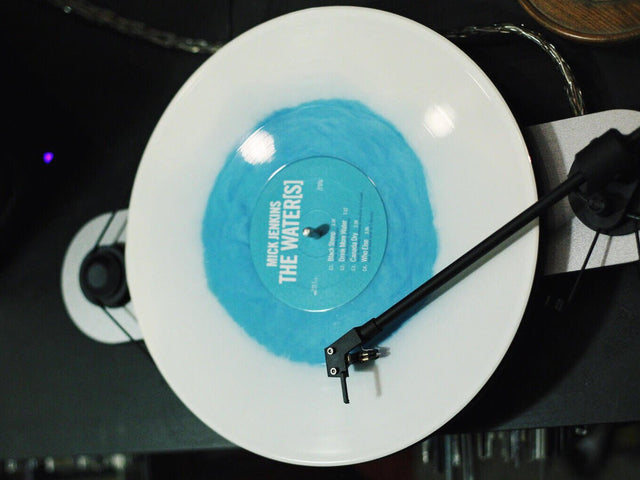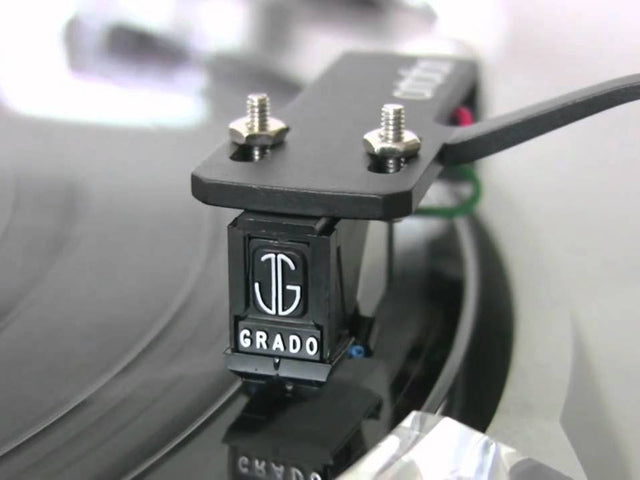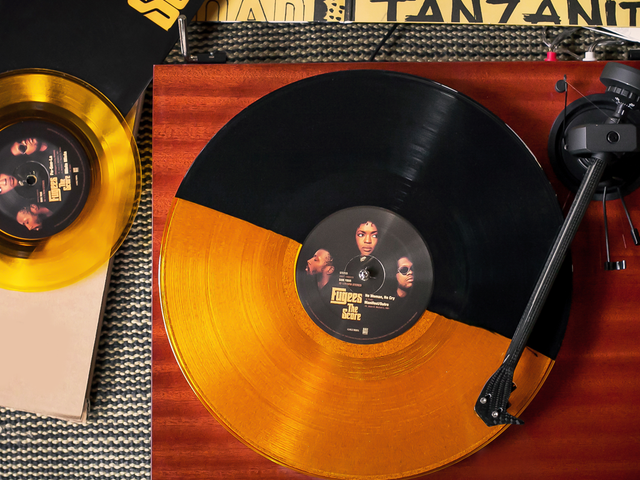Modular Untuk Semua: Kebangkitan dan Aksesibilitas Synth Modular
Ketika saya pertama kali mulai tertarik pada sintetis modular, sekitar satu setengah tahun yang lalu, beberapa teman saya yang sudah mendalami hal itu memperingatkan saya. Eurocrack, mereka menyebutnya. Sama adiktifnya dengan narkoba dan dua kali lebih mahal. Saya tertawa, menyukai permainan kata-kata dan lelucon itu, dan kemudian saya mencari harga secara online. Bingung, saya tidak tahu bagaimana saya bisa mulai membangun sebuah kit. Saya pergi ke toko Moog Music di pusat kota Toronto untuk berbicara dengan seorang karyawan; dia memberi saya estimasi mengenai hal-hal paling dasar yang saya perlukan untuk membuat kit yang berfungsi dari awal (dengan anggaran), dan totalnya lebih dari $1.500 CAD. Minimum. Baiklah, pikir saya. Saya hanya perlu menabung untuk ini, dan membeli semuanya sekaligus. Dan jadi saya mulai menabung uang.
Tetapi tentu saja, hidup dan hal-hal menghalangi, dan setelah sebuah perpindahan besar dan beberapa liburan serta Natal yang lain, saya kembali ke titik awal. Bagaimana saya bisa melakukan ini lebih cepat? Saya bertanya-tanya. Pada laju ini, saya hanya akan memiliki kit Eurorack penuh saat saya berusia 30 tahun. Tapi saya menginginkannya sekarang.
Saya bukan satu-satunya yang berada dalam situasi ini.
Seperti yang diketahui para penggemar alat musik di mana saja, bereksperimen dengan perangkat keras selalu sedikit menjadi investasi. Peralatan analog — peralatan analog yang baik — tidak datang dengan harga murah, dan kisaran harga alat bisa menjadi penghalang bagi banyak calon musisi. Synth modular tidak terkecuali — modul $2,000 bukanlah hal yang jarang, dan sebuah kotak untuk menyimpan modul Anda bisa mulai dari $300, bahkan untuk versi yang lebih rendah.
Pada tahun 2014, Robert Fantinatto dan Jason Amm merilis “I Dream Of Wires,” sebuah film dokumenter tentang synthesizer modular. Mereka berbicara dengan beberapa legenda pelopor di bidang ini, pengguna asli dari synthesizer besar yang dulu (di zaman sekarang, kita dimanjakan oleh mesin kecil), dan sejumlah komposer avant-garde. Di tahun ’70-an, mereka berkata, setiap orang yang ingin berada di garis depan musik berusaha mendapatkan synth modular. Mereka sangat keren! Tapi tetap saja, mahal, dan pada saat itu, hanya komposer yang lebih produktif yang mampu mendapatkan beberapa mesin yang lebih rumit dan unik. Ini tidak banyak berubah sejak tahun ’70-an dan ’80-an — biaya modular adalah yang menghentikan banyak orang untuk mengejar minat mereka lebih jauh.
Kemunculan teknologi telah membuat produksi musik lebih mudah diakses bagi semua orang, dengan produser dan penyanyi yang bercita-cita dapat menulis dan merekam seluruh album di studio rumah hanya dengan komputer dan mikrofon. Synth modular tidak terkecuali dari tren ini — biaya tinggi terkait dengan hobi perangkat keras dapat diimbangi dengan aplikasi baru yang hanya tersedia secara online yang dapat membantu para penggemar alat maju ke depan dalam mengejar impian elektronik mereka.
Musisi asal Inggris, Sam Battle, yang lebih dikenal sebagai Look Mum, No Computer, mengkhususkan diri dalam synth modular dan sirkuit pemecah alat pembuat suara yang aneh dan tidak biasa. Video YouTube-nya menampilkan dia membangun instrumen aneh dari bagian-bagian yang tampaknya acak, dan membuat synth-nya sendiri. Dikenal karena organ Furby miliknya yang raksasa dan menyeramkan, LMNC adalah seorang master DIY dan kreativitas, dan menunjukkan kepada penonton bagaimana mereka juga dapat terlibat dalam synth modular dengan anggaran yang lebih rendah. Dengan beberapa modul yang harganya mencapai lebih dari $5,000, penghalang utama hobi ini adalah biaya yang luar biasa. Namun, seniman seperti LMNC berusaha mengubah itu. Di channel YouTube-nya, ia juga menawarkan tutorial DIY, menunjukkan kepada calon musisi dan kreator bagaimana mereka dapat membuat kotak Eurorack (biasanya mulai dari sekitar $200 dan hanya akan meningkat dari situ) dengan bahan dasar dan opsi yang lebih terjangkau. Tentu saja, membangun kotak dan kit Eurorack juga memerlukan pemahaman tentang elektronik dan sirkuit, tetapi LMNC dan kreator lainnya secara perlahan juga menghilangkan hal-hal tersebut dengan menjelaskan dasar-dasar desain Eurorack dan synth modular serta penyuplai daya dalam istilah yang lebih mudah diakses dan dipahami, serta menunjukkan kepada musisi di mana mendapatkan barang-barang ini, apa arti voltase dan angka yang berbeda, dan bagaimana cara agar tidak merusak kreasi mereka.
Youtuber terkenal lainnya adalah Noir Et Blanc Vie, yang memiliki seluruh seri Modular Synth untuk Pemula, termasuk video tentang memasukkan modul pertama Anda ke dalam kotak Eurorack — sesuatu yang, bagi orang yang baru memulai di synth modular, bisa sangat menakutkan pada awalnya, terutama jika Anda tidak memiliki latar belakang yang kuat dalam elektronik (Anda segera akan belajar bahwa tidak semengerikan yang terlihat. Namun, ketakutan akan memicu sirkuit pendek pada perangkat keras yang sangat mahal cukup untuk menakut-nakuti siapa pun).
Sebelum saya mulai berpikir untuk membeli sebuah kit, teman-teman saya memperingatkan saya, saya seharusnya mencoba bereksperimen di VCV Rack, sebuah synthesizer modular online sumber terbuka, dan mencari tahu jenis suara apa yang ingin saya buat dengan synth saya, modul-modul apa yang perlu saya gunakan. Masuk akal, pikir saya. Wajar. Tidak perlu membeli banyak peralatan elektronik mahal tanpa sepenuhnya memahami cara menggunakannya. Namun, penghalang yang menghalangi begitu banyak orang untuk masuk ke synth modular adalah tepatnya itu: Kurangnya pemahaman dan ketakutan merusak sesuatu yang mahal dan elektronik. Di Toronto, komunitas synth modular sebagian besar terdiri dari pria-pria tua yang sudah berada di bidang ini selama bertahun-tahun — teman saya David menunjukkan kepada saya Synthi miliknya beberapa minggu yang lalu, sebuah synthesizer besar yang belum pernah saya lihat sebelumnya, yang dia miliki di koleksinya sejak tahun ’70-an (Synthi digunakan, sebagai bagian dari pengaturan yang lebih besar, oleh produser Kanada Sarah Davachi dalam albumnya Barons Court, yang dirilis oleh Students of Decay pada tahun 2015. Selain vintage klasik ini, dia juga menggunakan Buchla Music Easel, dan beberapa instrumen langsung, termasuk seruling dan cello). Meski kenyataannya sebagian besar, jika tidak semua, pria-pria ini adalah orang-orang yang paling baik dan suportif yang pernah saya temui, keraguan awal saya untuk menghadiri beberapa pertemuan synth modular di kota ini adalah karena saya khawatir akan merasa bodoh karena tidak mengetahui segalanya sebelumnya. Bagi mereka yang merasakan hal yang sama, program digital dan perangkat lunak seperti VCV Rack membantu menciptakan platform untuk berlatih dengan modul dan mengatur patch, serta mendorong pembelajaran dengan kecepatan masing-masing.
Demikian pula, ModularGrid adalah program lain yang memungkinkan pengguna merencanakan patch di mesin mereka dan menciptakan kemungkinan patch lainnya dengan modul yang mungkin belum mereka miliki. ModularGrid juga menawarkan manfaat berbagi kreasi Anda, baik melalui tautan terpisah atau di forum mereka, dan meminta tips serta saran dari pengguna lain, dan juga membantu memvisualisasikan dan mengorganisir ruang di rak.
Synth modular tidak selalu terlihat sangat jauh dari arus utama, begitu aneh. Alessandro Cortini, misalnya, dikenal karena musik synth modularnya, tetapi ia bahkan telah berkontribusi pada musik langsung untuk band Nine Inch Nails. Semakin banyak seniman yang bekerja untuk menggunakan synthesizer modular dan semi-modular dalam seni mereka, beberapa sebagai pikiran sekunder dan beberapa sebagai alat utama, dan minat pada synth vintage tetap kuat.
Sekarang, saya perlahan-lahan membangun sebuah kit bagian demi bagian. Saya merasa tidak masuk akal untuk ingin menabung untuk beberapa ribu yang saya butuhkan untuk pembelian massal, dan saya merasa lebih senang melakukan riset yang lambat dan memilih modul-modul yang benar-benar akan bekerja untuk saya. Pembelian nyata pertama saya untuk synth modular adalah synthesizer paduan semi-modular, Drummer From Another Mother (DFAM) dari Moog. Dengan sedikit lebih dari $900 setelah pajak, itu memang menggerogoti dompet saya, tetapi saya melihatnya sebagai hadiah ulang tahun untuk diri saya sendiri dan investasi untuk pengaturan yang lebih besar. DFAM memiliki dua osilator dan merupakan synth kecil yang kuat dengan sendirinya — digabungkan dengan modul Clouds dari Mutable Instruments (sekarang dihentikan, tetapi Anda masih bisa menemukannya di situs resale atau grup Facebook), itu sekarang menjadi mesin ambient. Tambahkan sequencer atau randomizer, dan Anda akan dapat mengubah urutan suara. Apa pun yang bisa diubah, akan diubah, dan saya rasa itulah yang saya suka dari hobi kecil yang berdebu dan teliti ini: Kebebasan untuk berubah, pembebasan, dan pada akhirnya, sifat sementara dari suaranya.
Sofie Mikhaylova is a well-rounded music nerd based in Toronto, Canada with a soft spot for found sounds and analogue electronics. You can follow her on Twitter.










